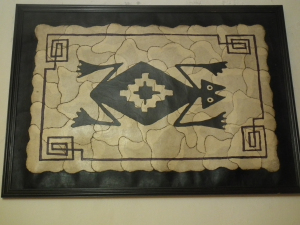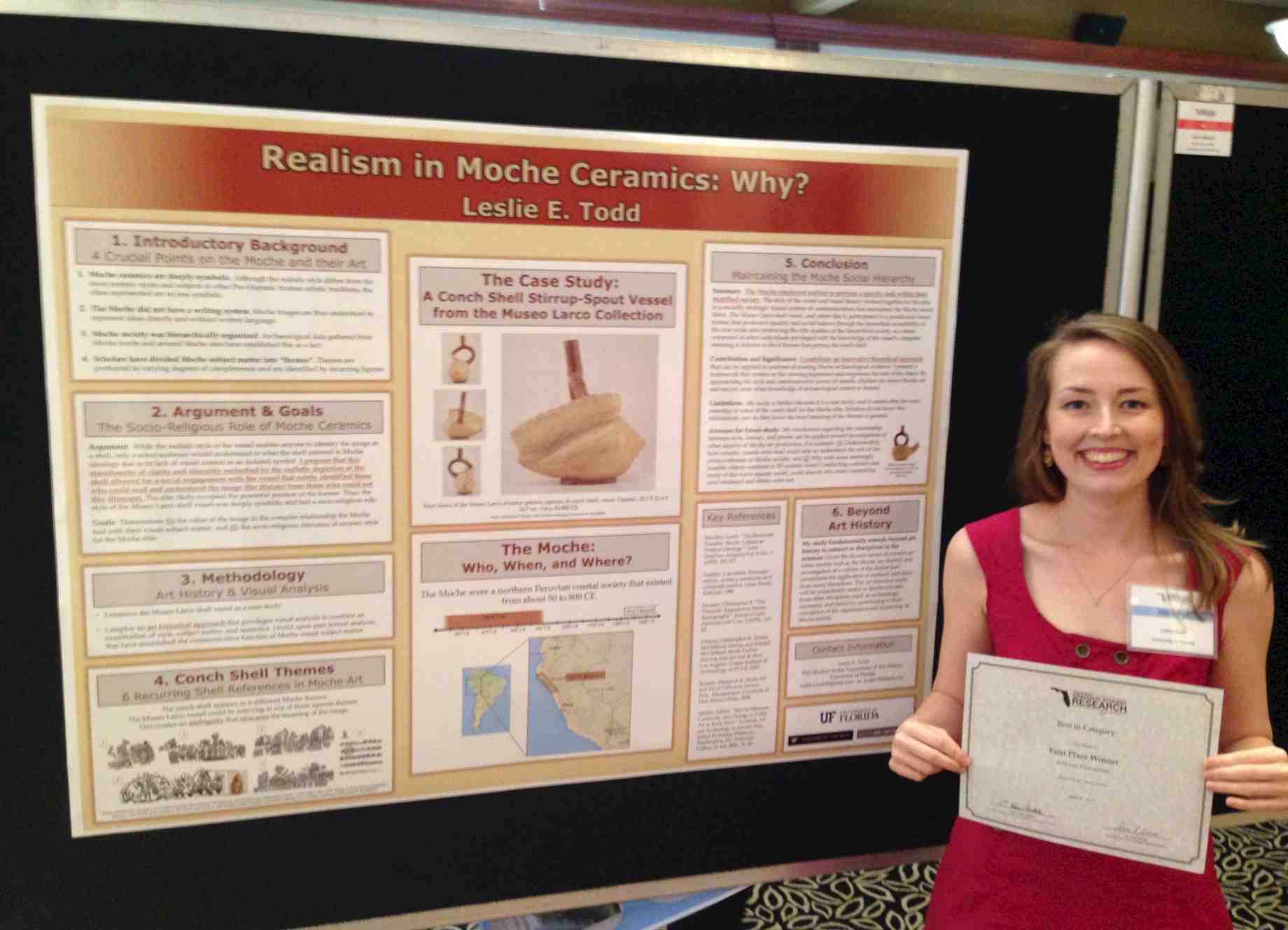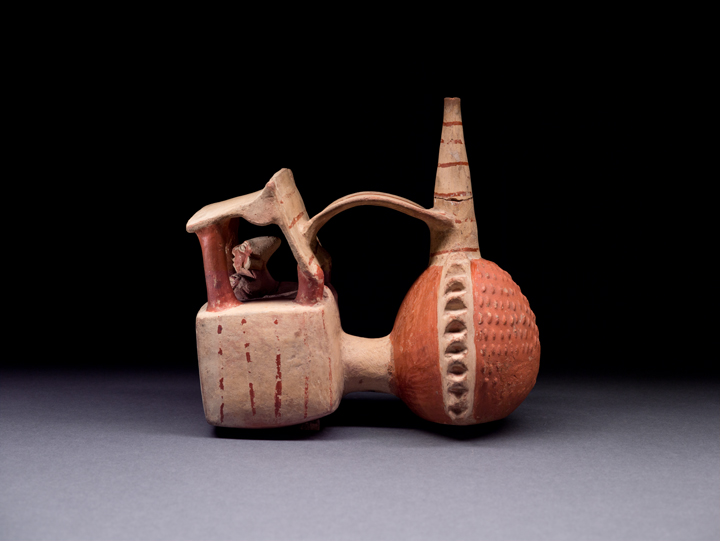Notes: I was looking again...(there are 'on and ons', and there are 'again and agains'!)...again I was looking at the Mural of the Myths, Mural de los Mitos...searching it out in Spanish brought up a better pic of the reproduction illustration at the site...this isn't that...brb...

took a bit to get a pic I could crop, and the crop is blurry...but one can kind of see what happened: I was looking closely at the Mural at the web page I found...could zoom in...and took note of the step design at the end of the rope the fellow is holding...and I thought, 'wait, that's the design I saw in the Inca polygon wall, the step design I went on about!'...which seems to be unique to all those walls...leastwise ones I've looked at again and again!...but, but, when I compare the two, it's not an exact match...but there is something about them...and I've thought the mural is an astronomical thing, and maybe that step design is the Southern Cross constellation...
quote
The twelve-cornered design itself occasionally appears in pre-contact artifacts such as textiles and ceramics from such cultures as the Wari, Ica, and Tiwanaku, but with no particular emphasis and no key or guide to a means of interpretation.
https://en.wikipedia.org/wiki/Chakana
unquote
Wiki's take is going on about the modern medallion Inca Cross...Chakana I guess that is...and then there is the 'Andean Cross'
quote
The symbol was used other Andean cultures long before the Inca ever existed. The earliest known use was found in a temple at the settlement of Ventarrón in the Lambayeque Valley which dates back some 4000 years.
The Chakana, or Southern Crux, is a four-star constellation which gives the Andean cross its roots in astrology and the principle of how the symbol came to be used in the spiritual traditions of ancient Andean cultures. Each star in the constellation represents the four points of the compass and thus lends itself to the four sides of the cross, each representing the four directions together with the four elements; earth, water, air and fire.
... ... ...
But even the angles of the Chakana symbol work out to a scale of 23.5 degrees – the same inclination as the tilt of the planet. How did the Andean cultures know this more than two thousand years ago?
,
The Importance of the Andean Cross to the Inca and Earlier Cultures
https://mastermindcontent.co.uk/the-importance-of-the-andean-cross-to-the-inca-and-earlier-cultures/
unquote
I dunno...but there is number 23 againagain!...go figure...LeBron insisted on getting number 23 on joining the Lakers...it's Michael Jordon's old number...that's a good take on that site, though a bit new age...some good pics to support the notions...find I put my trust in pre-Columbian things, so long as they aren't forgeries...everything after becomes a muddle as Old and New Worlds combine...the polygon wall step, which must be the Andean Cross stylized...
and, and then I was reading sample pages offered up on the web from this book: Exploring Ancient Skies:A Survey of Ancient and Cultural Astronomy...and it had a pic I couldn't snag like the one below...it's called the Akapan Pyramid, or Monument...it was looted and broken up all along since the Spanish, so just what was on top of it is a guess...what was left was an oval depression...but some study showed the depression had a drain, and some kind of piping that took water down to the other levels/steps...I gotta wonder if that has something to do with the rope in the figure's hands!...that is a very different looking stylization on that Mural of the Myths...for sometime...anyway, the book author explains, on top of the Pyramid is, or may have been, I dunno, a reflecting pond that like a cistern caught rain water, and then directed the water down the pyramid--watering it?...the Andeans were obsessed with El Nino...it brought floods, it brought drought...it was the Decapitator...and when it was happening they would appropriate (wrong word--proffer?) their gods with sacrifices...El Nino, we now know, is an event that affects weather of both Americas, South and North...so, I don't know if the Andean Cross on top of the pyramid is what was there...illustrators think it was...and it makes sense...lol...I went back to the page...thought I was done with it...but scrolled a bit down...another pic...the frog pose...
quote

The chakana in modern art of Argentina
same site...site doesn't source pic...a modern 'artifact'...maybe a copy of ancient one...or not...I dunno!...but that's really cool, and a fit with the frog in the spirals I posted up yesterday...day before?...this the sixtieth post in a series...see previous...another site bon bond me...academia something...follows me about...and gives me a headsup if someone in academia's realm is using my name...quoting me I guess...the web can do that...if we quote one another, tell us we're being quoted...or being mentioned, talked about...that would get unwieldly if one is a popular sort...famous and all!...not my problem...an aside...

Akapana Pyramid google search/images...
quote from me, previous blog post
"then, again, the step fret might represent "the marvelous spiral"...lol...but what I want to track out is those four plume like things on the wave monster in the Moche mural...I've seen them in the bean warrior illustrations"
5/30/18
6/27/18
unquote
I figured out what the four stalks are...stalks...the eye stalks of a mollusk...specifically of the Strombus shell...I know, there's four of them...but the stylization I suspect turned two eye antennae into four...Andeans like everything in 'fours'!...and I happened searching this out on a really neat article...scholarly sort...by that, I mean the writing is 'scientific'...(il)literate Engagement:A case study of stirrup-spot vessel from the Museum Larco Colletion
quote
(il)literate Engagement: A Case Study of a Moche Strombus Galeatus Stirrup-Spout Vessel from the Museo Larco Collection
http://www.academia.edu/26044499/_il_literate_Engagement_A_Case_Study_of_a_Moche_Strombus_Galeatus_Stirrup-Spout_Vessel_from_the_Museo_Larco_Collectionunquote
I think that's the 'academia' site I was going on about...really good article...she won an award!...
quote

Leslie Todd won first place in the Arts and Humanities category in the Florida Statewide Graduate Student Research Symposium held April 24, 2015 for her poster, “Realism in Moche Ceramics: Why?”
https://arts.ufl.edu/in-the-loop/news/leslie-todd-wins-top-award-at-2015-florida-statewide-graduate-student-research-symposium/
unquote
article has many things, and an over all pre-supposition, that the Andean elites had an oral tradition that went along with their artistries...same notion I went on and on about yesterday, or day before?...without the oral lore the artistries don't make sense...or are difficult to fathom...and she adds that the hierarchy of Andean society was such, that the lower levels of society were illiterate, but still very much apart of the lore and doings of the elite...hence the play on words: (il)literate...it was a culture that both knew, and didn't quite know, what they were about!...hmmph...but I was searching up the Strombus Monster and those four eye stalks!...which as it happens, the article goes on and on about in examining one vessel made realistically like a Strombus shell...(I keep getting Srombus mixed up with the other shell fish...
quote

Fig. 1. Architectural vessel, A.D. 800–1300. Peru. Lambayeque. Ceramic; Height: 5 7/16 in. (13.8 cm), Length: 7 1/4 in. (18.4 cm), Width: 3 1/16 in. (7.7 cm). American Museum of Natural History, New York (B/8285)
The very first European account of the lands of the Inca Empire describes a trading raft laden with riches. In 1525, Francisco Pizarro's expedition encountered the indigenous sailing craft off the coast of Tumbez, just south of the equator. Filled with objects of gold and silver, including crowns, diadems, belts, bracelets, leg ornaments, and breast plates, the raft's cargo also included emeralds, crystal, and amber, as well as many elaborately decorated and richly worked garments made from wool and cotton. To the astonishment of the Spaniards, these fineries were traded for coral-colored seashells, undoubtedly Spondylus, a marine bivalve known as the thorny oyster (fig. 2).
https://www.metmuseum.org/art/collection/search/656368?exhibitionId=%7B96ba212a-7a70-41ec-8329-aee305a05f45%7D&oid=656368&pg=1&rpp=6&pos=46&ft=*&fe=1
unquote
that's the one that may have had the hallucinogenic properties from red tides, or something)...Strombus shells are those big trumpet shells everyone brings home from the souvenier seashell stores...there's an idea!...I want now to go find a sports bar to watch the Allstar game...maybe there's a parking space at the beach...I'll get a Strombus shell while thereabout...the Strombus Monster to come...
:)
DavidDavid










No comments:
Post a Comment